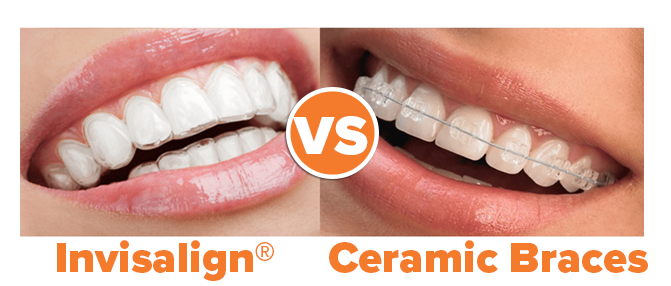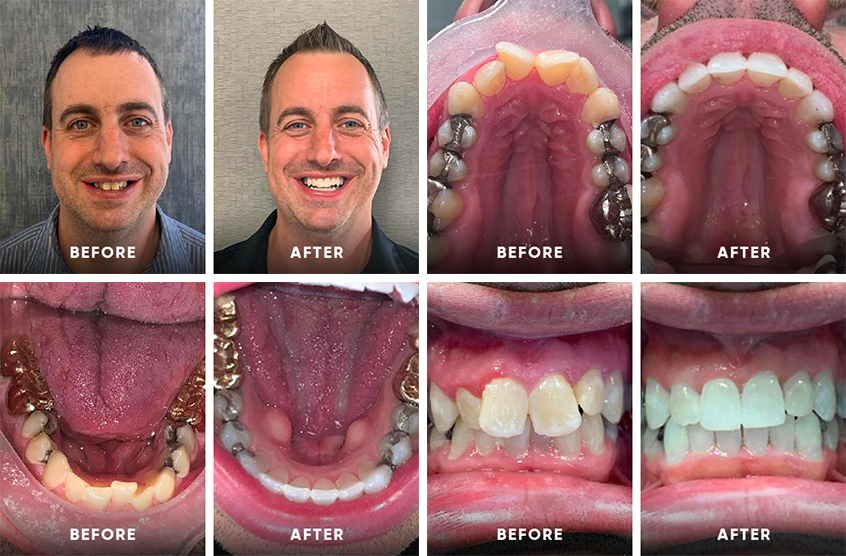What to Anticipate Throughout Your Invisalign Journey: A Comprehensive Review
What to Anticipate Throughout Your Invisalign Journey: A Comprehensive Review
Blog Article
Invisalign vs. Standard Braces: Which Alternative Is Right for You?
When considering orthodontic therapy, the option in between Invisalign and traditional dental braces presents several essential elements that warrant cautious examination. Invisalign provides a discreet option with removable aligners, while typical dental braces offer a much more noticeable yet reliable remedy for extreme imbalance. Each alternative includes unique benefits and downsides associated to aesthetic appeals, comfort, treatment period, and price. Comprehending these nuances is crucial for making a notified decision that lines up with your individual choices and way of life. The inquiry remains: which option will best fulfill your orthodontic needs and expectations?
Summary of Treatment Choices

On the other hand, standard braces include metal braces and cords that are bonded to the teeth. This technique uses continuous stress gradually to achieve alignment. While effective for complex orthodontic problems, conventional dental braces need regular visits for changes and can pose difficulties in maintaining dental health as a result of the difficulty of cleaning up about wires and braces.
Both options have their advantages, and the selection typically pivots on specific dental conditions, lifestyle choices, and individual conformity. Eventually, speaking with an orthodontic expert is critical for figuring out one of the most appropriate treatment plan customized to private requirements. Recognizing the nuances of each choice can significantly influence the overall success of orthodontic treatment.
Visual Factors To Consider
A significant element influencing the option between Invisalign and conventional dental braces is the aesthetic charm each treatment offers. Invisalign aligners are crafted from clear plastic, making them essentially unnoticeable when used.
In comparison, standard braces include steel brackets and wires, which can be a lot more visible. While developments in orthodontic technology have led to the development of smaller braces and colored elastics, traditional dental braces still preserve an even more conspicuous account. For some individuals, the exposure of dental braces may discourage them from looking for required treatment.
Inevitably, the option between Invisalign and traditional dental braces might rest on personal choices concerning visual appeals. Clients who focus on discernment often lean toward Invisalign, while those who are less worried about visibility may decide for standard dental braces. Comprehending the visual effects of each alternative is vital for making an informed choice that straightens with one's way of living and choices.
Convenience and Convenience

In regards to ease, Invisalign aligners are removable, enabling individuals to enjoy their favored foods without limitation and maintain ideal dental hygiene. Cleaning and flossing are streamlined, as the aligners can be taken out during these regimens, whereas standard dental braces require cautious maneuvering around wires and brackets.
Additionally, Invisalign's progressive system permits less orthodontic visits. Clients generally obtain multiple collections of aligners at once, which can enhance the therapy procedure and decrease time invested in the orthodontist's chair. On the other hand, typical dental braces demand normal changes, making them much less convenient for those with hectic routines. Invisalign. Overall, the convenience and convenience of Invisalign make it an attractive selection for many individuals looking for orthodontic therapy.
Therapy Duration and Effectiveness
While both Invisalign and traditional dental braces are reliable in fixing dental imbalances, the duration of treatment can vary considerably between the two alternatives. Commonly, Invisalign treatment can take anywhere from 12 to 18 months, depending on the complexity of the case. The clear aligners work by slowly changing teeth into their preferred placements, and routine follow-ups with an orthodontist help guarantee progression stays on track.
In comparison, conventional braces frequently need a longer commitment, usually varying from 18 months to three years. This is because of their set nature and making use of braces and cables, which can be much more effective for extreme misalignments and complex situations (Invisalign). The treatment effectiveness of conventional dental braces is well-documented, as they permit exact changes and greater control over tooth motion
Eventually, the option in between Invisalign and traditional Recommended Reading dental braces may pivot on both the anticipated therapy duration and the certain dental issues handy. Consulting with an orthodontist is vital, as they can supply tailored recommendations based upon individual needs, making sure the selected approach straightens with desired timeframes and results.
Expense Comparison and Insurance Coverage Alternatives
Expense plays a substantial function in the decision-making procedure for people thinking about orthodontic treatment, whether choosing Invisalign or traditional braces. Typically, the price of Invisalign varieties from $3,000 to $8,000, while standard dental braces commonly cost between $2,000 and $6,000. Factors influencing these costs include the complexity of the case, the period of treatment, and geographical location.
Insurance policy protection can considerably affect out-of-pocket costs. Many dental insurance strategies provide partial insurance coverage for orthodontic therapies, however the specifics can differ extensively. It is vital for patients to examine their insurance plans to figure out the degree of coverage for either option. Generally, standard dental braces may be more regularly covered by insurance coverage plans contrasted to Invisalign, which some insurance providers categorize as an aesthetic treatment.
Additionally, numerous orthodontic methods offer flexible layaway plan, making both treatment options much more easily accessible. People should ask about prospective funding alternatives and discounts for in advance repayments. Evaluating the complete price, including insurance policy benefits and layaway plan, is crucial for making a notified decision that straightens with both aesthetic preferences and budget plan factors to consider.

Final Thought
In recap, the option in between Invisalign and standard dental braces pivots on numerous aspects, consisting of aesthetic choices, comfort, treatment period, and expense. Invisalign uses a very discreet, detachable option that assists in oral hygiene and nutritional flexibility, while traditional dental braces might be preferable for intricate oral problems and typically come with a reduced cost factor. Inevitably, examination with an orthodontist is vital to examine individual scenarios and figure out the most ideal treatment alternative for accomplishing optimal dental alignment.
When taking into consideration orthodontic therapy, the choice in between Invisalign and standard braces presents numerous crucial elements that warrant mindful analysis.Contrasting Invisalign and conventional dental braces reveals Get More Info unique therapy options for orthodontic modification.While both Invisalign and typical braces are reliable in remedying oral imbalances, the duration of therapy can differ considerably between the 2 alternatives.Price plays a substantial function in the decision-making process Website for people considering orthodontic treatment, whether deciding for Invisalign or traditional dental braces.In recap, the option in between Invisalign and typical braces pivots on numerous elements, consisting of aesthetic preferences, convenience, therapy duration, and cost.
Report this page